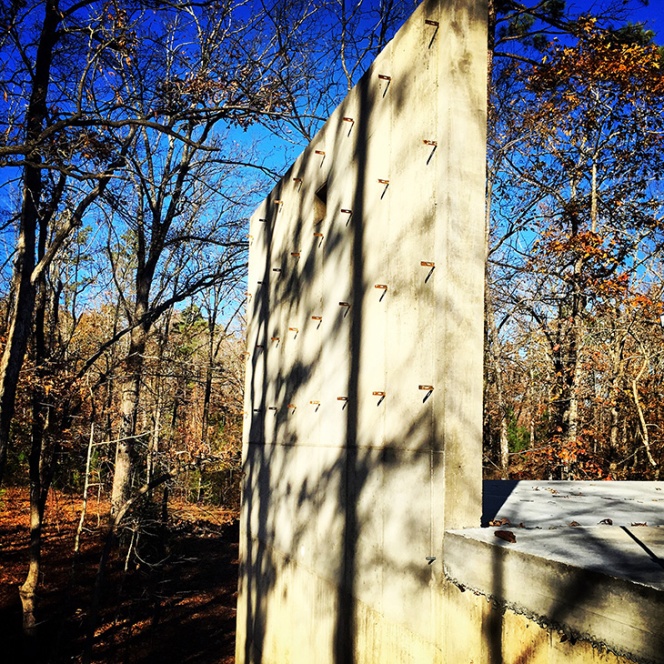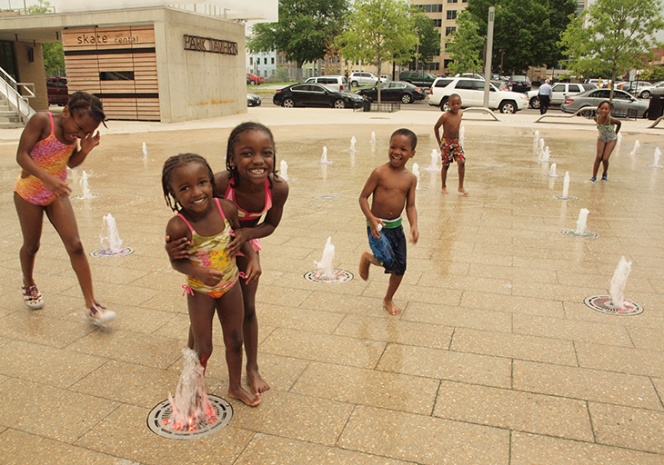Your Cart is Empty
Recent Articles
- Efficiency Meets Innovation: SketchUp 2024 Unveiled
- Maxon One Spring 2024 Release Packs Particle Power, Toon Shading, and More
- TurboCAD 2024 Unveiled by IMSI Design: Discover the New Features and Enhancements
- Exploring the Latest InfraWorks 2025 Updates
- Introducing the Latest Innovations in Autodesk's ReCap Pro 2025
- Discover the Latest Enhancements in Civil 3D 2025
- Exploring the Newest Features and Enhancements in Revit 2025
- Explore the Latest Features in Vantage 2.3 Update
- Explore the Latest AutoCAD 2025 Enhancements: Activity Insight, Smart Blocks, and Apple Silicon Support
- Unveiling Enscape 4.0: Revolutionizing Design with Unified Experience for macOS and Windows Users
The Edge: Alan Maskin, (Roof)Top Design at Olson Kundig
March 24, 2015 6 min read
Novedge: Tell us a bit about who you are and what you do. 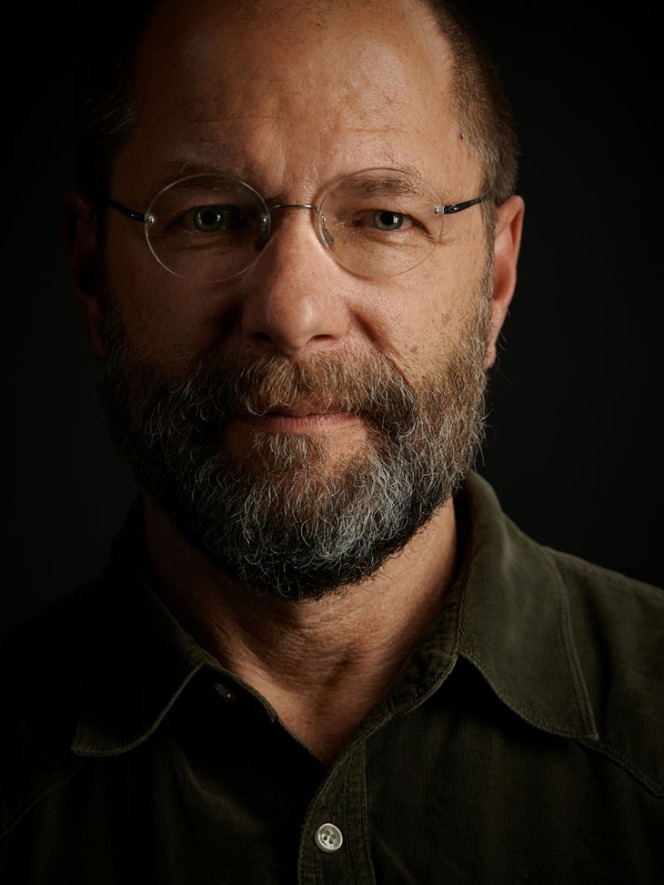 Alan Maskin: My name is Alan Maskin and I am one of four owners of Olson Kundig, a Seattle based design firm that practices around the globe. My design focus at Olson Kundig for the past 23 years has been Architecture, Museum Projects, Exhibit Design, Environmental Branding, Park Design, and Cultural Production. My recent projects include Secret Garden in Seoul, South Korea, The Bill & Melinda Gates Foundation Visitor Center, the Bezos Center for Innovation, Kurt Farm Shop, set design for the Degenerate Art Ensemble, and the Microsoft Cybercrime Center. I also co-directed and curated the firm’s experimental work space, [storefront] which sought to merge design, culture and social practice. https://player.vimeo.com/video/90361725
Alan Maskin: My name is Alan Maskin and I am one of four owners of Olson Kundig, a Seattle based design firm that practices around the globe. My design focus at Olson Kundig for the past 23 years has been Architecture, Museum Projects, Exhibit Design, Environmental Branding, Park Design, and Cultural Production. My recent projects include Secret Garden in Seoul, South Korea, The Bill & Melinda Gates Foundation Visitor Center, the Bezos Center for Innovation, Kurt Farm Shop, set design for the Degenerate Art Ensemble, and the Microsoft Cybercrime Center. I also co-directed and curated the firm’s experimental work space, [storefront] which sought to merge design, culture and social practice. https://player.vimeo.com/video/90361725
 Alan Maskin: My name is Alan Maskin and I am one of four owners of Olson Kundig, a Seattle based design firm that practices around the globe. My design focus at Olson Kundig for the past 23 years has been Architecture, Museum Projects, Exhibit Design, Environmental Branding, Park Design, and Cultural Production. My recent projects include Secret Garden in Seoul, South Korea, The Bill & Melinda Gates Foundation Visitor Center, the Bezos Center for Innovation, Kurt Farm Shop, set design for the Degenerate Art Ensemble, and the Microsoft Cybercrime Center. I also co-directed and curated the firm’s experimental work space, [storefront] which sought to merge design, culture and social practice. https://player.vimeo.com/video/90361725
Alan Maskin: My name is Alan Maskin and I am one of four owners of Olson Kundig, a Seattle based design firm that practices around the globe. My design focus at Olson Kundig for the past 23 years has been Architecture, Museum Projects, Exhibit Design, Environmental Branding, Park Design, and Cultural Production. My recent projects include Secret Garden in Seoul, South Korea, The Bill & Melinda Gates Foundation Visitor Center, the Bezos Center for Innovation, Kurt Farm Shop, set design for the Degenerate Art Ensemble, and the Microsoft Cybercrime Center. I also co-directed and curated the firm’s experimental work space, [storefront] which sought to merge design, culture and social practice. https://player.vimeo.com/video/90361725
Bezos Center for Innovation at the Museum of History & Industry from Olson Kundig Architects on Vimeo.
Novedge: We think the idea of [storefront] is brilliant – can you explain what happens in the space?
Alan Maskin: [storefront] began when we leased an abandoned storefront in our Pioneer Square neighborhood, an area hit hard by the recent recession. We signed the lease without having a clear sense of how we might activate the space and so Kirsten Murrayand I reached out to individuals and groups in our community to see if we could collaborate. We asked a question that became critical to the endeavor, “what can we do together that we cannot do apart?" The intent was to determine if there was logic where their work could merge with a design firm like ours.
We had to work together. We imposed some rigor to the challenge: we needed to conceive of an idea, design it, build it AND design the programs that would occur once opened in just four weeks with a materials budget of $1000 for each installation. We did 18 different events and installations in two years and each was an experiment of sorts. We hosted listening parties in our Record Store where we collected 3,000 record albums with related programs and events every night. Mushroom Farm was an attempt to grow food from re-purposed coffee grounds. We hosted harvest dinners using the 200 pounds of oyster mushrooms grown and held concurrent seminars on the future of urban agriculture, organic farming and mycology. WONDERLAND: Shaking Up Reality became a film studio for Reel Grrls, a film school that mentors teen aged girls. Dabble Lab was a community classroom where anyone in our region could teach any subject they chose and anyone could take the class.
Novedge: What is a recent project that you worked on?
Alan Maskin: 38 Beams was a temporary installation that served as the Design Miami/ Collectors Lounge. Working with Ted Hall from Spearheadwe found a collection of mid-century glu-laminated beams recently salvaged from the demolition of a Los Angeles commercial building. The project was named 38 Beams because that was the number of beams we could fit on the truck and we decided to design the entire project around stacking the beams to create the walls and the bar. 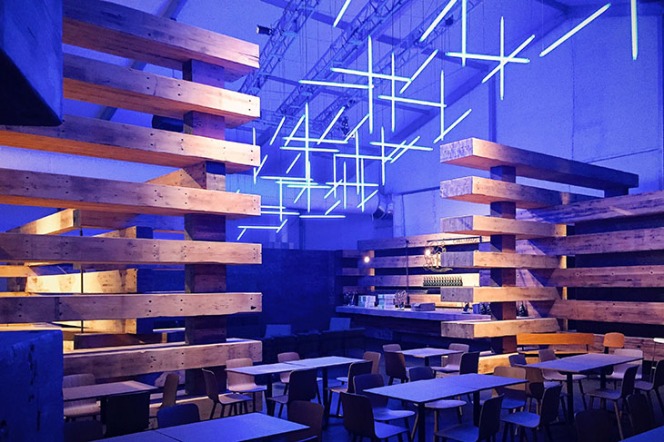 The presence of Pacific Northwest artists is minimal at the design fair and in order to bring a local sensibility to the international event we incorporated a range of design elements from fellow Northwest collaborators. We asked Seattle based light artists Lilienthal/Zamora to create a custom chandelier. Northwest music label SubPop provided the playlist and Seattle fashion store Totokaelodressed the “bouncers." It was fascinating, and a little surreal, to see the world of artists and designers that came to hang out in the space.
The presence of Pacific Northwest artists is minimal at the design fair and in order to bring a local sensibility to the international event we incorporated a range of design elements from fellow Northwest collaborators. We asked Seattle based light artists Lilienthal/Zamora to create a custom chandelier. Northwest music label SubPop provided the playlist and Seattle fashion store Totokaelodressed the “bouncers." It was fascinating, and a little surreal, to see the world of artists and designers that came to hang out in the space. 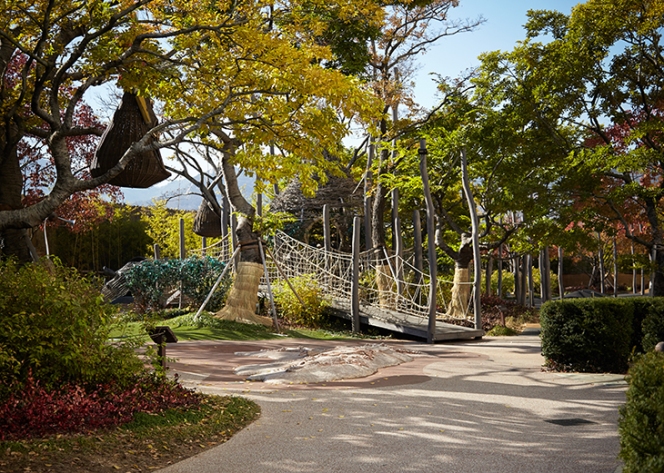 I am currently working on my third public rooftop park design in Korea. I'm fascinated with the untapped potential of the vast wasteland that exists on the top layers of cities. The potential for sustainable solutions is considerable. My focus has been to bring children to the tops of buildings to expose them to nature and daylight, and provide them with places to play. My first park was called Secret Garden, conceptually created in collaboration with the artist Doh Ho Suh. The park is a wooded forest atop an 9 story building filled with a collection of secret places. My third park design is based on a modern re-telling of an ancient Aesop's Fable created around 600 BC. The rooftop design will have hundreds of trees and plants from the South Korean region.
I am currently working on my third public rooftop park design in Korea. I'm fascinated with the untapped potential of the vast wasteland that exists on the top layers of cities. The potential for sustainable solutions is considerable. My focus has been to bring children to the tops of buildings to expose them to nature and daylight, and provide them with places to play. My first park was called Secret Garden, conceptually created in collaboration with the artist Doh Ho Suh. The park is a wooded forest atop an 9 story building filled with a collection of secret places. My third park design is based on a modern re-telling of an ancient Aesop's Fable created around 600 BC. The rooftop design will have hundreds of trees and plants from the South Korean region. 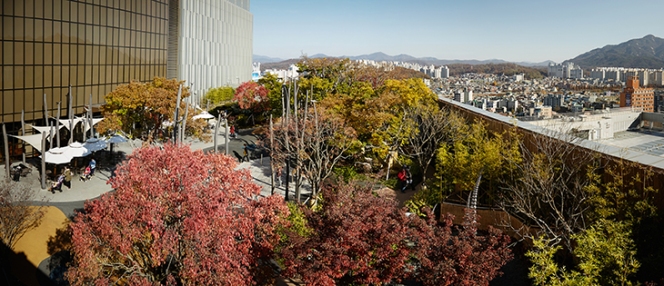
 Novedge: Your projects sit at the intersection between Technology, Architecture and Culture at the point that it seems now difficult to imagine Architecture without the other two. Explain why Culture needs to be a major player in any Design.
Novedge: Your projects sit at the intersection between Technology, Architecture and Culture at the point that it seems now difficult to imagine Architecture without the other two. Explain why Culture needs to be a major player in any Design.
Alan Maskin: The fusion of design and culture has frequently tracked to projects that require the engagement of a design idea with large groups of people. I know three designers in Seattle who are developing projects that attempt to do just that.
Architect Katrina Spade won a two year grant to develop her Urban Death Project, a rethinking of the landscape of death that integrates new rituals around human composting and sustainability. Artist and designer Sarah Bergmann created The Pollinator Pathway, a visionary plan to strengthen and reconnect fragmented green spaces, working across existing infrastructure to provide a new national network of connected public design projects, designed to ecological standards. Another Seattle native, Susie Lee, is looking to redesign the landscape of love. Susie and her colleagues have designed Siren, a new dating app for women that gives them power in what they choose to share about themselves and with whom they share it. Siren was designed to use technology in an original cultural modality that isn't dependent on the objectification of women.
Novedge: What are some of the New Technologies that you are embracing?
Alan Maskin: At the end of last year I felt an itch to experiment with some of the new tools that are available. While touring Walla Walla Foundry I became intrigued with tools that artists are using to fabricate their work and I wondered why these tools weren't playing a larger role in our industry. One morning I grabbed a grocery bag in my kitchen, cut out two eyes and made a mask. I sent it to the foundry and asked them to use their 3d scanner to make a scan of the paper mask and double the size. I then asked them to use their robotic CNC machine to carve the mask out of a glu-laminated block of plywood. I wanted to create something with the robot that would have been difficult to achieve carving by hand. The result was fantastic but I was most excited about the potential of using these tools for future Architectural spaces.
Novedge: Olson Kundig's residences have become a status symbol. Is it because of their form or their function?
Alan Maskin: I cannot think of a single example from our portfolio where form was created purely for the sake of form. Jim Olson designs spaces intended to frame nature, light, and art. Tom Kundig tends to design buildings that are subservient to their surroundings and the desires of his clients. Kirsten Murray is in love with the intrinsic beauty of designs that are pragmatic, and I design public projects that borrow heavily from how we approach the design of homes.
Novedge: Static Architecture is so yesterday, do you think we will see more Kinetic Architecture in the future?
Alan Maskin: I cannot speak for other firms but you can expect to see much more coming from Olson Kundig's kinetic design studio in the next decade. We began designing gizmos almost two decades ago when I introduced Tom Kundig to Phil Turner (who had engineered a brilliant kinetic solution to a challenge I was designing). Tom wanted to turn a large steel and glass wall into an operable window on his design for the Chicken Point cabin and that began a long series of kinetic pieces that has become a significant part of our portfolio. When Phil retired from his firm we asked him to consider coming to work with us and luckily he agreed. Now anyone that has an idea or a project that involves movement, adaptability, or change can sit down with one of the greatest kinetic thinkers alive and create new forms of kinetic architecture. We have multiple prototypes in the works with plans for many others.
Novedge: At this point I have to ask, what's your definition of Architecture?Alan Maskin: It's ironic and timely that you ask as we are about to drop the word Architecture from the firm’s name. While Architecture will always be a big piece of what we are about, it feels restrictive and not fully representative of all we are doing. If you were to walk through the studio today you would see people working on buildings of many types but also kinetic work, performance design, experience design, object design, photography and videography, environmental graphics, interiors, sustainable design, and exhibit design.
Novedge: Do you have a favorite motto you live by?
Alan Maskin: "It's like I can't be proud of it unless I know we overcame some kind of struggle". -Jack White, The White Stripes. All good Design is a struggle.
Good to know. It's also good to know that great Architecture always wins at Olson Kundig's ! Be sure to follow their many endeavors via Twitter .
And don't forget to check out Novedge Twitterfeed too: for great interviews and the latest Software News!
Related articles
Also in NOVEDGE Blog

Maxon One Spring 2024 Release Packs Particle Power, Toon Shading, and More
April 10, 2024 4 min read
Read More
TurboCAD 2024 Unveiled by IMSI Design: Discover the New Features and Enhancements
April 10, 2024 2 min read
Read MoreSubscribe
Sign up to get the latest on sales, new releases and more …




